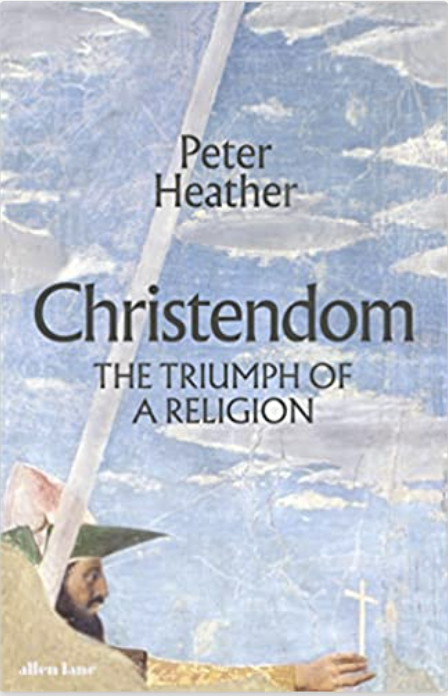
Christendom’s rise to Europe-wide dominance and prominence


Medieval historian and chair of medieval history at King’s College, London, Peter Heather reveals an engaging survey of Christianity and reassesses its rise, from the ruins of the Roman Empire to the molding of modern Europe.
In the fourth century AD, a new faith exploded out of Palestine, overwhelming the paganism of Rome, converting Emperor Constantine in the process, and defeating a host of other rivals. A thousand years later, all of Europe was controlled by Christian rulers, and the religion, ingrained within culture and society, exercised a monolithic hold over its population.
Christian religion became such a defining feature of the European landscape, and how a small sect of isolated and intensely committed c congregations was transformed into a mass movement centrally directed from Rome. Christendom- a revolution that transformed a small sect of true believers into a mass religious movement.
Peter Heather shows how Christendom constantly battled against both so-called heresies and other forms of belief, From the crisis that followed the collapse of the Roman Empire, which left the religion teetering on the edge of extinction, to the astonishing revolution of the eleventh century and beyond in which the Papacy emerged as the head of a vast international corporation and traces Christendom’s chameleon-like capacity for self-reinvention and astounding willingness to mobilise well-directed force.
Harnessed into imperial legal and other systems, Christianity grew. The earliest Christians had frequently come from society’s margins, now the elites converted. In the face of varying beliefs about who Jesus was, what the Trinity meant, and how to live a holy life, more bishops accrued greater authority and attempted to impose their orthodoxy. Pagan rituals were in many places outlawed and temples destroyed.
Bishop Eustathius of Sebaste in Asia Minor allowed women to cut their hair, wear men’s clothes, and function as priests. Once piety for the growing number of converts eased, some Christians looked back nostalgically to the days when paradise was only for true believers, so they moved into the desert to fast and pray. The Pagan Emperor Julian, Constantine’s nephew, who made an unsuccessful attempt to restore the old gods is given due consideration as someone who might have reversed the fortunes of Christianity if he had just had military success, charging into Persia without his military armour, however, did not help his quest.
Although Christianity was Romanised, the decline of the Roman Empire, from the late fifth century onwards, presented churches with the challenge of surviving without the imperial infrastructure as the new, expansive religion of Islam emerged.
Christianity’s flexibility kept it growing and changing, as the success of newly minted missionaries in Ireland and Anglo-Saxon England demonstrated Christianity’s capacity to adapt to new circumstances.
All over Europe was syncretistic religion, with Christianity forming only a thin layer on the top of traditional beliefs and practices, exacerbated by a shortage of priests limiting the provision of worship and pastoral care.
In the Middle Ages, religious authority shifted from emperors to popes, Charlemagne, crowned Holy Roman Emperor on Christmas Day in 800, led the religious reforms of his day and made Christian Europe a new intellectual powerhouse. From the 11th century onwards, the disparate territories of western Europe and their local Christian communities were brought under the authority of an alternative religious Roman Empire with a Pope, not an emperor at its centre according to Peter Heather.
How the Christendom: The Triumph of a Religion by Peter Heather, Allen Lane £35, 736 pages.
